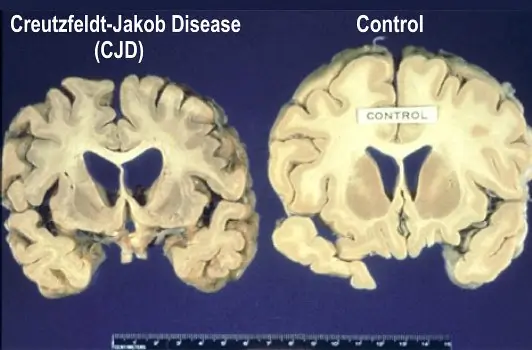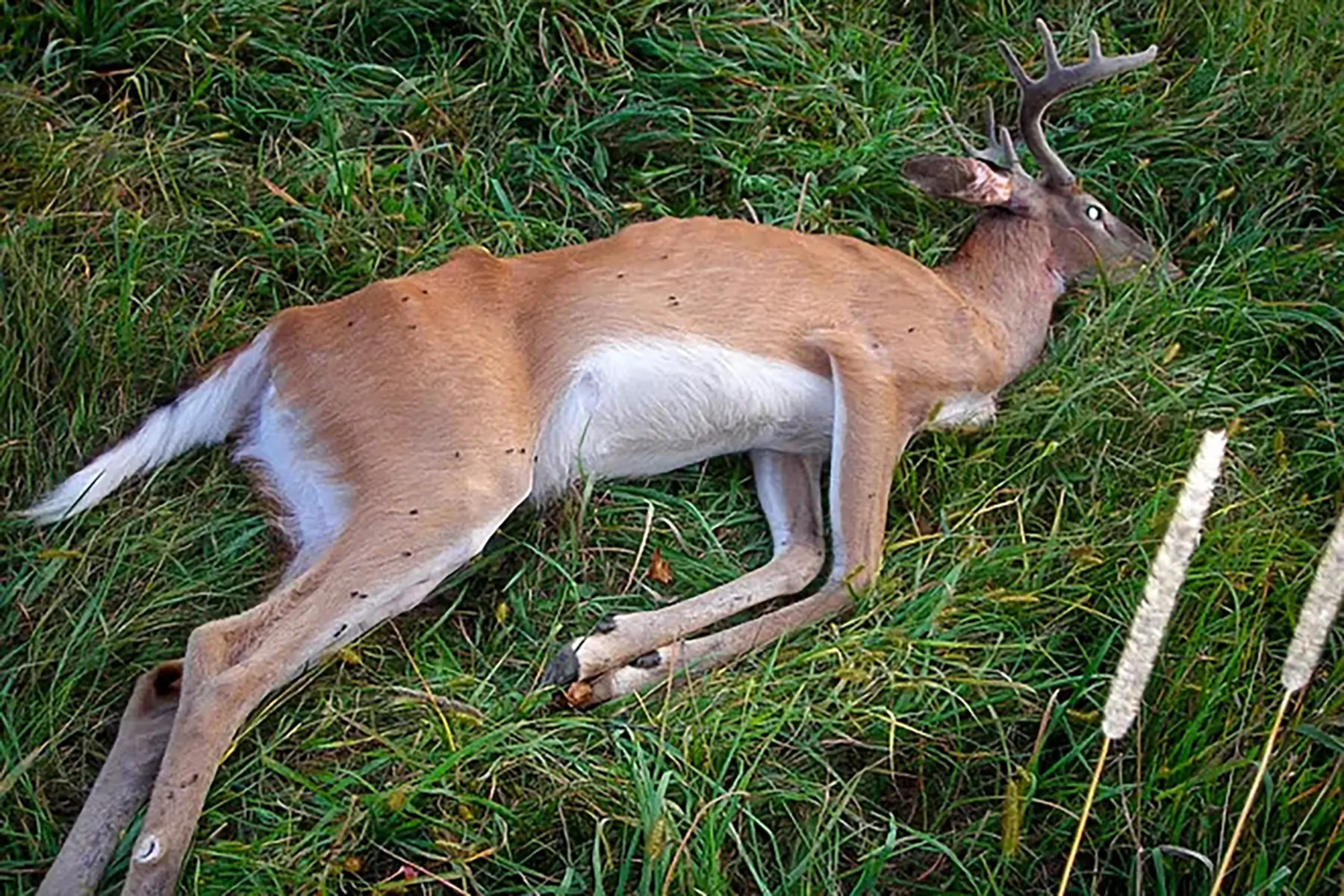CWD, the common acronym for the deer-borne illness Chronic Wasting Disease, has been a worrisome issue for both hunters and wildlife managers since it was first discovered in 1967. An always-fatal malady caused by bizarre proteins called prions, CWD has been found in deer and elk herds in at least 32 states.
But one silver lining is that it has never been seen to affect humans.
Now, an article published in Volume 102 of the journal Neurology suggests a possible link to human illness. The article states that a “72-year-old man with a history of consuming meat from a CWD-infected deer population” died in 2022 after a rapid onset of uncharacteristic aggression and confusion. A friend of his, who also was known to consume meat from the same infected population of deer, has also recently died of confirmed Creutzfeldt-Jakob disease (CJD).
The deaths have raised flags about the possibility of CWD making the leap from primarily infecting hooved animals to becoming zoonotic and infecting humans.
IMPORTANT NOTE BEFORE WE CONTINUE: The article published by The American Academy of Neurology is anecdotal. The suggested link is based on collecting patient history and known information about their deaths. Neither hunters’ tissues nor deer tissues in the infected population were physically sampled/studied by the researchers.
What Is Creutzfeldt-Jakob Disease (CJD) and How Does It Relate to Chronic Wasting Disease (CWD)?

The National Institute of Neurological Disorders and Stroke defines Creutzfeldt-Jakob disease (CJD) as “a rare, rapidly worsening brain disorder that causes unique changes in brain tissue and affects muscle coordination, thinking, and memory.” It is extremely rare, only affecting about 350 people in the U.S. each year. Most people infected with this prion disease die within 1 year.
CJD falls into a class of diseases known as spongiform encephalopathies. To break it down, the condition is exactly what it sounds like.
Spongiform: Having or denoting a porous structure or consistency resembling that of a sponge.
Encephalopathy: Damage or disease that affects the brain.
This class of diseases is caused by a prion, a protein that causes other proteins to fold improperly, causing holes.
CJD is very similar in presentation to chronic wasting disease (CWD) in wild game animals, bovine spongiform encephalopathy (BSE) or “Mad Cow Disease” in cattle, and scrapie in sheep. These conditions are all prion diseases that cause spongiform encephalopathies.
Symptoms of CWD, CJD, BSE, and Scrapie
The symptoms of these diseases are not exactly the same, but incredibly similar. CJD is known to cause sudden extreme confusion and often aggression in humans. With CWD, the animals tend to “waste away” caused by the same level of confusion. BSE, or mad cow disease, is also characterized by extreme confusion and aggression.
While it is still unclear whether CWD will cause illness in humans, BSE has caused more than 200 CJD deaths in humans, mostly in Europe. There is still no evidence that scrapie prions can infect humans.
Transmission & Contagion

CWD affects many different species of animals, including North American elk or Wapiti, red deer, mule deer, black-tailed deer, white-tailed deer, Sika deer, reindeer, and moose. The disease has been confirmed to have spread to several other species in both real-world and lab-controlled environments.
These diseases are all transmittable through direct consumption and environmental consumption. It is thought that a carcass left in the field can transmit CWD for quite some time after death. The prions are ingested by eating contaminated tissues. This is why it is suggested that all parts of the brain and spinal cord not be eaten or disturbed during the processing of the animal.
Do Hunters Need to Be Concerned?

The short answer is yes. However, this concern isn’t new. The article published by the American Academy of Neurology certainly paints the possibility of a plausible link between the two and certainly is a step toward pushing for more study, but it isn’t a concrete link.
It’s certainly alarming that two men known to consume meat from CWD-infected deer both seem to have died from conditions so closely linked to the disease. It’s worth noting that, unlike bacteria or viruses, prions cannot be neutralized by cooking.
As both a hunter and a former biological and biomedical science major, I’ve had the opportunity to look at spongiform encephalopathy firsthand. That experience has made my stance pretty staunch on whether or not my family would consume meat from a CWD-suspected or -confirmed deer. The answer is: NO.
Playing It Safe: Testing Your Wild Game for CWD




I’ll admit I’ve gotten lackadaisical about my sample-taking in recent years. Because I hunt in areas that haven’t had positive populations and the animals I’ve taken have all appeared very healthy, I’ve simply neglected the responsibility to test. I will test all my animals from this point forward, as I once did.
That being said, it isn’t a difficult task. Many states offer CWD sample-taking kits. Others (like Montana) offer instructions on how to take samples and send them in. You can always swing by your local fish and game office with the whole head, and they will be glad to help. In most states, CWD testing of wild game taken by hunters is free or very affordable, and in some places, it’s been mandatory already for years.
The California Department of Fish and Wildlife has produced an instructional video that makes the process a bit more easy to understand.
For now, it remains unconfirmed whether CWD can cause illness in humans. More study is needed. But regardless of methodology and cost, these new developments will likely encourage more hunters to test their meat before eating.
Note: Those with a weak stomach may want to skip by this video








